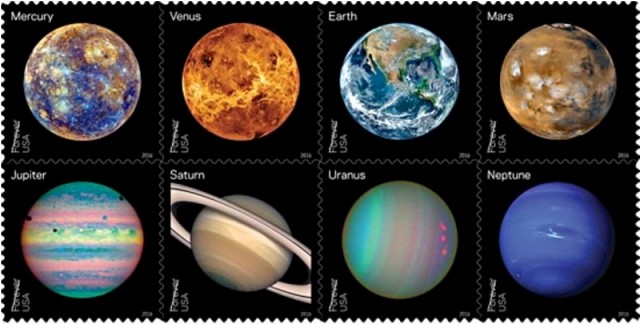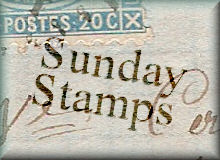well, thanks to Viridian, i seem to be focusing on Macedonian stamps more than usual...but I cant help it when the themes are as such...I could go for many other stamps from around the world...but then, there are Macedonian ones which perfectly fit in, and it seems like a great opportunity to represent my country...if I dont, who else will :) Plus I seem to be making my updates on Sunday only...so I grab the opportunity...
and this week's theme is 'people honoured by a stamp for any reason: historical, politician, writer, artist, educator, Nobel prize winner....well I have a plentiful of stamps to show regarding this....but my choice fell on this FDC issues last year...portraying the woman whom Im sure you've all heard of, Mother Teresa.
whats so special about this FDC? well, for starters it is a limited edition...second, it is a joint issue of the post offices in Macedonia, Albania and Ksovo, and as you can see it features all the 3 stamps issued in the respective countries.
The stamps have a value of 100 lekë (Albania), 1 euro (Kosovo) and 60 denars/equal to 1 euro (Macedonia).
As I said, the stamps and FDC were issued last year, in order to commemorate the 100 years since her birth. The stamp size is 31 x 43mm, offset printing technique, comb perforation.
Now, I dont know if there is anything needed to be said about this woman....I think she is famous enough and you know quite a lot about her....but I dont know how many of you actually know that she was born in Skopje, Macedonia, on 26 August 1910? (or in Üsküb, which is the Turkish name for Skopje, since she was born during the time of the Ottoman Empire in our country). So, thats why in a way we consider this woman so close to us...coz even though she was of Albanian ethnicity and Indian citizenship, she actually started her life right here, in my hometown.
Her name Teresa comes due to the fact that when she took her first religious vows as a nun on 24 May 1931, she chose to be named after Thérèse de Lisieux, the patron saint of missionaries, but because one nun in the convent had already chosen that name, Agnes opted for the Spanish spelling Teresa.
Her life as you know was dedicated to charity missions and helping the people in need....and thats one long long endless list, so I wouldnt go into details, otherwise this post would be never-ending...
But it is worth mentioning that in 1979, she was awarded the Nobel Peace Prize, "for work undertaken in the struggle to overcome poverty and distress, which also constitutes a threat to peace." She refused the conventional ceremonial banquet given to laureates, and asked that the $192,000 funds be given to the poor in India, stating that earthly rewards were important only if they helped her help the world's needy.
For those having doubts how to pronounce her real name, Gonxha Bojaxhiu, .....the 'xh' diphthong is pronounced as the 'j' in 'jar' for example...while the 'j' in 'Bojaxhiu' is pronounced as the 'y' in 'yo-yo' or 'yoghurt'...i hope it is not confusing :)
Some years ago, a memorial house was built in the city centre...but if you are asking me, it is one kitschy piece of architecture...and unfortunately, many people here think the same, but who are we to talk about it :)
Anyways, if there are people who'd be interested in this FDC, im sorry I have to say this, but I cant guarantee anything coz of its limited print-out. But I do usually have Mother Teresa postcards in stock, so if someone's interested, you know where to find me.
so, that was my entry for today's Sunday Stamps...to see other famous people portrayed, please click the big button below
and this week's theme is 'people honoured by a stamp for any reason: historical, politician, writer, artist, educator, Nobel prize winner....well I have a plentiful of stamps to show regarding this....but my choice fell on this FDC issues last year...portraying the woman whom Im sure you've all heard of, Mother Teresa.
whats so special about this FDC? well, for starters it is a limited edition...second, it is a joint issue of the post offices in Macedonia, Albania and Ksovo, and as you can see it features all the 3 stamps issued in the respective countries.
The stamps have a value of 100 lekë (Albania), 1 euro (Kosovo) and 60 denars/equal to 1 euro (Macedonia).
As I said, the stamps and FDC were issued last year, in order to commemorate the 100 years since her birth. The stamp size is 31 x 43mm, offset printing technique, comb perforation.
Now, I dont know if there is anything needed to be said about this woman....I think she is famous enough and you know quite a lot about her....but I dont know how many of you actually know that she was born in Skopje, Macedonia, on 26 August 1910? (or in Üsküb, which is the Turkish name for Skopje, since she was born during the time of the Ottoman Empire in our country). So, thats why in a way we consider this woman so close to us...coz even though she was of Albanian ethnicity and Indian citizenship, she actually started her life right here, in my hometown.
Her name Teresa comes due to the fact that when she took her first religious vows as a nun on 24 May 1931, she chose to be named after Thérèse de Lisieux, the patron saint of missionaries, but because one nun in the convent had already chosen that name, Agnes opted for the Spanish spelling Teresa.
Her life as you know was dedicated to charity missions and helping the people in need....and thats one long long endless list, so I wouldnt go into details, otherwise this post would be never-ending...
But it is worth mentioning that in 1979, she was awarded the Nobel Peace Prize, "for work undertaken in the struggle to overcome poverty and distress, which also constitutes a threat to peace." She refused the conventional ceremonial banquet given to laureates, and asked that the $192,000 funds be given to the poor in India, stating that earthly rewards were important only if they helped her help the world's needy.
For those having doubts how to pronounce her real name, Gonxha Bojaxhiu, .....the 'xh' diphthong is pronounced as the 'j' in 'jar' for example...while the 'j' in 'Bojaxhiu' is pronounced as the 'y' in 'yo-yo' or 'yoghurt'...i hope it is not confusing :)
Some years ago, a memorial house was built in the city centre...but if you are asking me, it is one kitschy piece of architecture...and unfortunately, many people here think the same, but who are we to talk about it :)
Anyways, if there are people who'd be interested in this FDC, im sorry I have to say this, but I cant guarantee anything coz of its limited print-out. But I do usually have Mother Teresa postcards in stock, so if someone's interested, you know where to find me.
so, that was my entry for today's Sunday Stamps...to see other famous people portrayed, please click the big button below








